
13 Things Found Frozen In Europe's Mountain Ice
Everyone loves time capsules: be they intentional ones left behind in metal tins for fifty years or unintentional ones frozen into ice many ages ago. Europe has been inhabited for many a millennium: by us, extinct species of humans that resembled our modern selves, and perhaps most interestingly, fantastical creatures that no longer exist. One of the reasons that researchers are confident in this outlandish concept is through the tangible evidence that Europe's icy cliffs miraculously preserved, refusing to let these priceless treasures turn into dust. New extravagant discoveries occur frequently, but here are the most exceptional finds to date.
The Ötzi Iceman
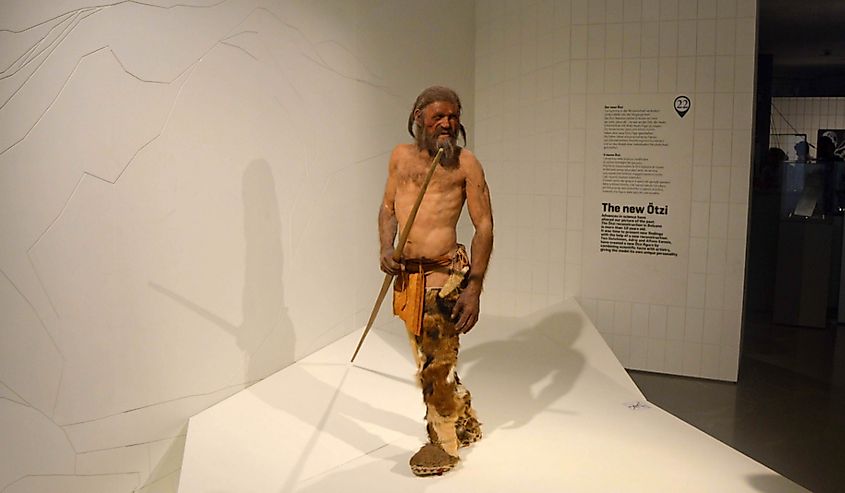
Among the spectacular discoveries frozen in Europe's mountain ice, one of the most renowned is the Ötzi Iceman. Unearthed in 1991 from the Otztal Alps—hence the name—between Austria and Italy, this natural mummy provides an exceptional peek into the Copper Age of Europe. Ötzi was not found alone but accompanied by all his worldly possessions—clothing, tools, and even food. Radiocarbon dating places him and his belongings around 3300 BCE, making the mummy over 5,000 years old. The mummy, in an exceptional state of preservation, offers an in-depth understanding of the life, culture, and practices of Copper Age Europeans. Among the most intriguing features of Ötzi are his 61 tattoos. Astoundingly, some of these tattoos coincide with acupuncture points, suggesting that this medical practice may have prehistoric roots in Europe. Today, the Iceman can be visited at the South Tyrol Museum of Archaeology in Bolzano, Italy.
Neolithic Arrowheads
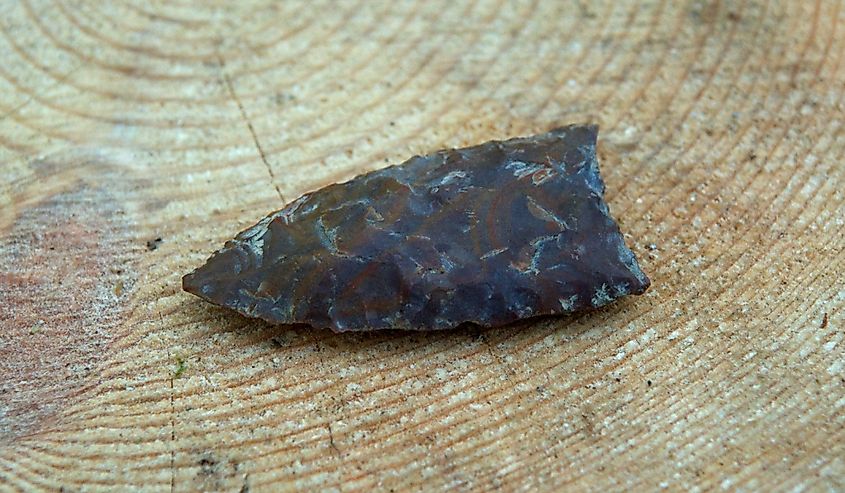
Adding to these impressive discoveries, Neolithic arrowheads have been found preserved in ice patches in the Alps. These tools, crafted from materials such as chert and obsidian, offer compelling evidence of the advanced tool-making capabilities of our Neolithic ancestors. They date back to a period approximately between 4000 and 1750 BCE, an era known for significant advances in human culture and technology. What makes these arrowheads even more intriguing is that different styles can point to distinct tribes or periods, giving archaeologists unique insights into the diversity and cultural evolution of the time. Various museums across Europe currently house these ancient artifacts, and they are accessible for members of the public to visit.
Viking Artifacts
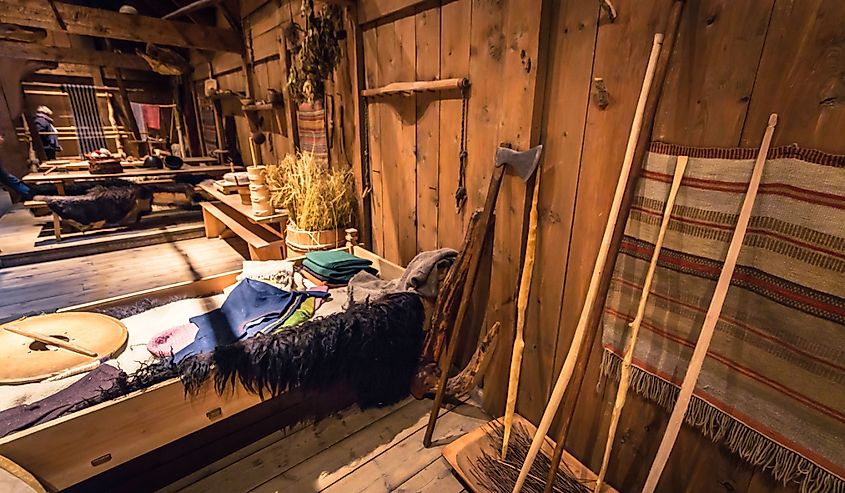
In the frosty landscapes of Norway's Jotunheimen region, archaeologists discovered an assortment of Viking artifacts. The finds were comprehensive, ranging from weapons to clothing, and even included household goods. These artifacts span a considerable historical timeframe, dating from the Iron Age to the Medieval period. This collection offers us valuable insights into the daily life of the Vikings, their trade routes, and their interactions with other cultures. What sets some of these artifacts apart is the evidence of repair, suggesting these items held significant value to their Viking owners and were carefully maintained over time. Today, these treasures are carefully preserved and displayed in various cultural history museums across Norway for the public and researchers, to study and appreciate.
Woolly Mammoth Remains
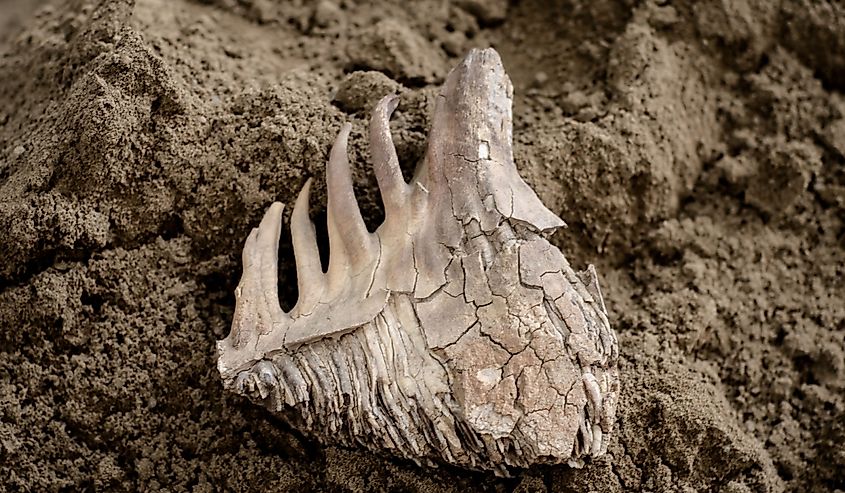
Frozen in time, the skeletal remains of a woolly mammoth were found in the icy Ural Mountains. Unlike most paleontological discoveries, this was not just a collection of bones. The remains included well-preserved fur and soft tissues, a rare find indeed. These fascinating creatures roamed the Earth during the last Ice Age, approximately 20,000 years ago. The well-preserved state of this mammoth provides an exceptional opportunity for scientists to learn more about the diet and lifestyle of these magnificent, extinct creatures. The mammoth remains are housed in various museums in Russia, attracting tourists and scientists alike from around the world. Moreover, it is worth noting that an extinct woolly rhinoceros was found in Siberia, and it dates back to potentially 50,000 years ago.
Ancient Roman Coins

High in the Swiss Alps, a stash of ancient Roman coins lay hidden until recently. The hoard included an array of silver and bronze coins, each with its own historical narrative. These coins can be traced back to the Roman Empire, specifically the 1st to 4th centuries CE. Their discovery so far from Rome reflects the expansive reach and influence of the Roman Empire during its peak. The coins are of particular interest due to their depictions of emperors and significant events from Roman history, providing a tangible link to the past. Today, these historical treasures reside in the Swiss National Museum, offering visitors a unique glimpse into Roman life and history.
Frozen 1946 Swiss Aircraft
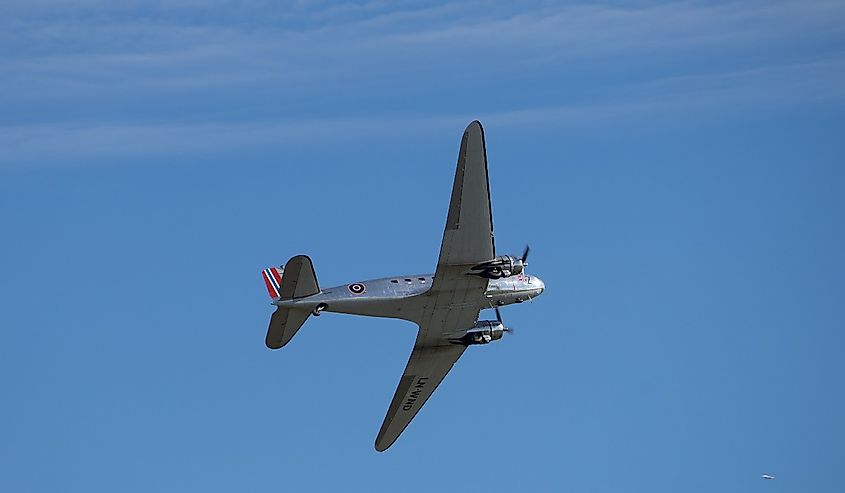
In a chance encounter, three teenage hikers discovered the propeller of the renowned C-53 Skytrooper Dakota that crashed into Switzerland’s Gauli Glacier in 1946. This crash marked a turning point in Alpine air rescue and is well-known in Swiss history. The U.S. military plane was en route from Vienna to Pisa, carrying several high-ranking officials and their families, when it lost its way in the Alps and made a forced landing on the Gauli glacier. The survivors withstood freezing conditions until Swiss mountaineers and innovative ski-fitted planes could rescue them, marking the start of Alpine air rescue. The propeller, surprisingly intact, was recovered nearly seven decades later, a chilling reminder of the dramatic event. The propeller’s final destination remains undetermined. Notably, several military aircraft from World War II have also been discovered in the frozen mountains of Europe.
Prehistoric Pollen and Seeds
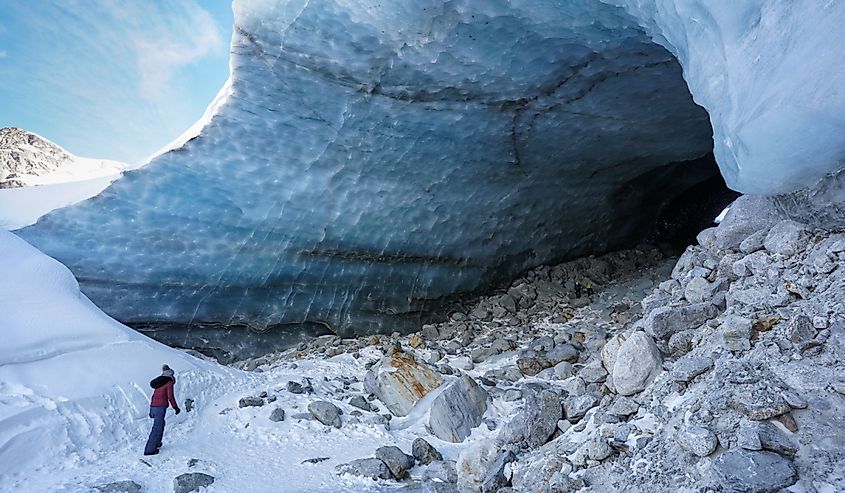
The ice cores of the Alps are a treasure trove of data going back thousands of years. Found within these cores are microscopic pollen granules and seeds. These minute objects, suspended in the ice, hold the key to understanding the flora of prehistoric Europe. By studying these samples, scientists can track climatic changes over millennia and gain insights into early human agricultural practices. Additionally, among these ancient botanical samples, some represent species that are either extinct or have drastically evolved over time. Currently, these valuable pieces of the past are under examination in various research institutions, helping scientists to peel back the layers of history.
Ice Age Puppies

In the cold expanses of the Russian Yakutia region, scientists made an unexpected discovery – the remains of two Ice Age puppies. The two young dogs were remarkably well-preserved due to the permafrost, their bodies providing a direct link to a time around 12,000 years ago. This discovery has the potential to significantly contribute to our understanding of early canine domestication and the nature of human-animal relationships during the late Ice Age. Notably, the puppies were discovered in close proximity to remnants of human-made structures, suggesting that these dogs may have been domesticated. The bodies of these prehistoric puppies are now housed in the Russian Academy of Sciences, where they continue to provide fascinating insights into the ancient past.
Medieval Mountain Pass

In the icy expanse of the Lendbreen ice patch in Norway, archaeologists unearthed something beyond the ordinary: a medieval mountain pass. Sitting at high altitudes, the trail came with a collection of artifacts that indicated its usage as a pass in bygone eras. The pass has been dated to span a broad time period, from the Roman Iron Age to the Medieval period. This discovery has shed light on transportation and trade routes during these periods, showing the interconnectedness of societies even then. Among the many artifacts excavated, shoes, clothing, and horse equipment stood out, painting a vivid image of a world long gone. The site and these findings remain under intensive archaeological scrutiny.
Cave Lion Cub
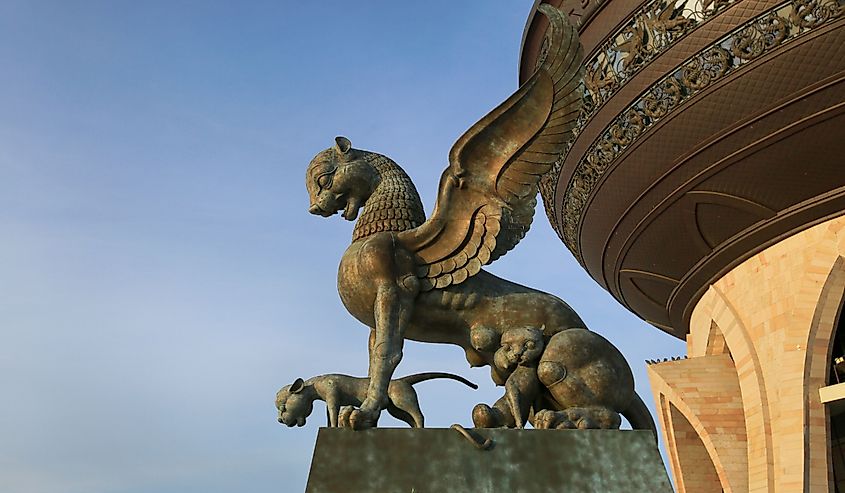
Elsewhere, in Siberia's permafrost, an immaculate specimen of an Ice Age cave lion cub was found. Despite its estimated age of around 28,000 years, its fur, skin, and organs were astonishingly preserved. This level of preservation has given scientists an opportunity to study the species' morphology and lifestyle, which had previously been clouded in mystery. The impeccable state of the cub even allowed scientists to conduct a thorough autopsy. Currently, the cave lion cub is being preserved at the Academy of Sciences of the Republic of Sakha in Russia.
Bronze Age Bow
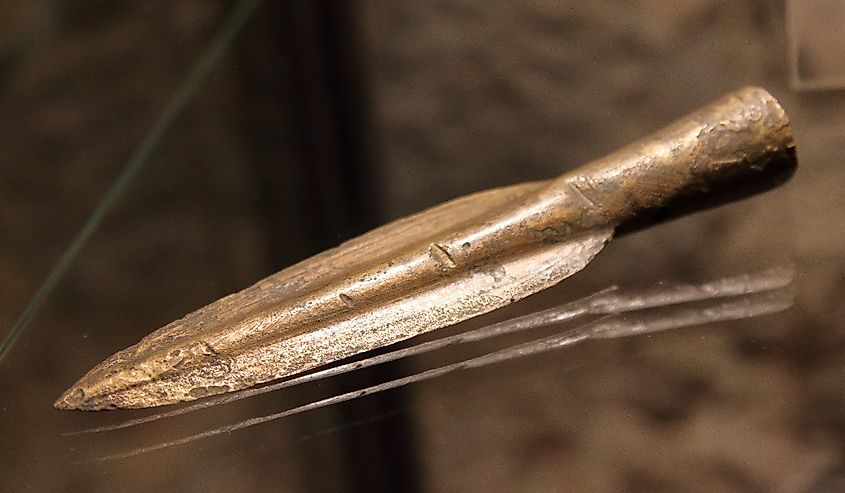
In the Schnidejoch pass in the Swiss Alps, a surprising artifact was found: a 3,000-year-old wooden hunting bow. This object has been dated to the late Bronze Age, around 1000 BCE. The bow stands as one of the oldest organic artifacts ever discovered in the Alps, shedding light on the hunting practices of that time. The condition of the bow offers an invaluable look into the craftsmanship of the Bronze Age. This artifact is intriguingly made of Yew wood, which is the species of wood that made medieval English Longbowmen into legends.
Glacier Mice
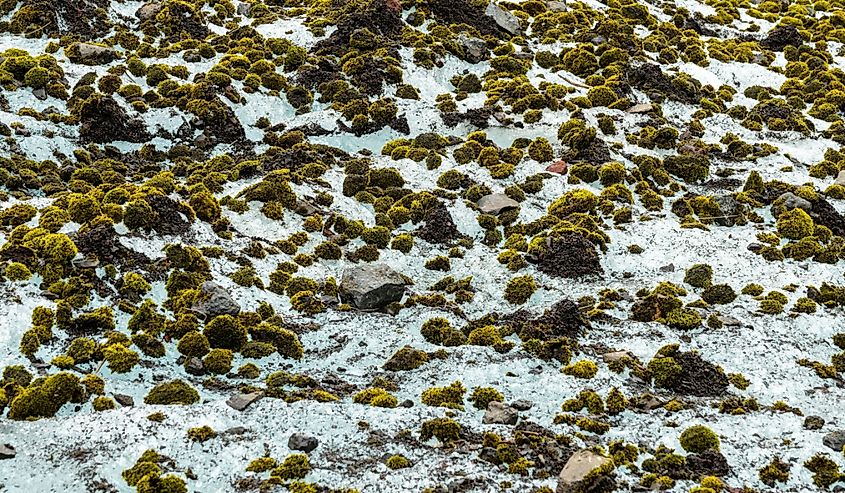
Discovered on numerous European glaciers, a peculiar ecosystem known as 'glacier mice' has piqued scientific interest. These rolling moss balls, which are not actually mice, acts as hosts to a variety of minute creatures. This collection presents a captivating spectacle of life in severe conditions. These peculiar formations have been observed for several centuries, adding a special touch to the icy landscape. The presence of these organisms provides valuable understanding into the resilience and adaptability of life under harsh circumstances. An additional feature of these moss balls is their coordinated movement, the mechanism of which remains largely a mystery. Currently, glacier mice continue to be the subject of ongoing research by dedicated ecologists and biologists.
Frozen Microorganisms

Lastly, in the deep ice cores of various European mountains, scientists have discovered a different kind of specimen: microorganisms. This find includes a diverse array of bacteria, viruses, and other microbes frozen within the ice. Some of these organisms are believed to date back hundreds of thousands of years. Their discovery is helping scientists to better understand ecosystems of long-gone eras and the impact of climate change over vast stretches of time. One particularly fascinating aspect of these finds is that some organisms, once thawed, have been successfully revived under lab conditions. These ancient microbes continue to be the subject of study in a variety of biological and geological institutions.
Conclusion
Europe's frozen glaciers serve as natural telescopes into the past, preserving relics from prehistoric to historical eras. These discoveries provide invaluable insights into historical climates, extinct species, early human practices, and human-animal relationships. These wonders, trapped in ice, continually fuel the human quest to understand this planet's relationship to all of us, and perhaps, it can help us predict what the future has in store. Ultimately, one can only wonder what oddities our civilization will be leaving for future generations to discover.











